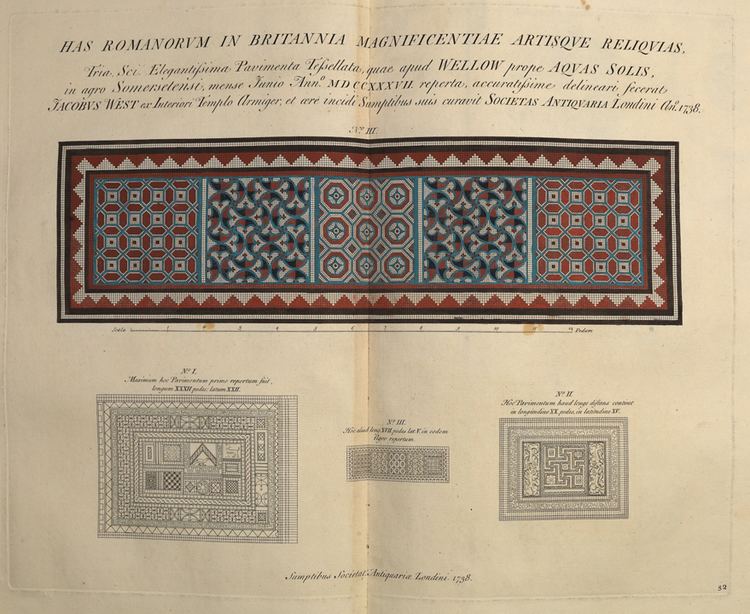 | ||
Vetusta Monumenta is the title of a published series of illustrated antiquarian papers on ancient buildings, sites, and artefacts, mostly those of Britain, published at irregular intervals between 1718 and 1906 by the Society of Antiquaries of London. The folio sized papers, usually written by members of the society, were first published individually, and then later in collected volumes.
Contents
Publication
The full title is Vetusta monumenta quae ad Rerum Britanicarum memoriam conservandam Societas Antiquariorum Londini sumptu suo edenda curavit, but the volumes are normally simply cited as Vetusta Monumenta. There were various reprints of both individual papers and collected volumes, and the plates were often published separately from the text. According to the HOLLIS database at Harvard: "The seven volumes are dated 1747, 1789, 1796, 1815, 1835, 1883 and 1906 (for the fourth part of vol.7). The plates for vol. 1 were published between 1718 and 1747; plates for vol. 2 were published between 1748 and 1789; plates for vol. 3 were published between 1790 and 1796; plates for vol. 4 were published between 1799 and 1815; plates for vol. 5 were published between 1816 and 1835; plates for vol. 6 were published between 1821 and 1885; plates for the four parts of vol. 7 were published between 1893 and 1906."
The series began the same year that the society formalized its existence with the first minuted meeting on January 1, 1718, at the Mitre Tavern, Fleet Street; the society's main journal Archaeologia did not begin publication until 1770. Members of the society received a free copy as each part was published.
Contents
The emphasis was on the large and detailed illustrations, initially high quality engravings, which conveyed information on the subject matter in an accessible and economical way. Each issue was usually developed from papers and research of the society, giving a text description accompanied by illustrated details it had commissioned. The assemblage of maps, site plans, and other detail was a novelty that found popular appeal.
The views in the series contained images of people and other means of conveying scale, providing the perspective of the interested visitor. These accompanied text descriptions for the sites, but provided additional information with high levels of detail and multiple or idealised viewpoints to simulate a well informed tour. Many of the plates show the setting, inset with exploded views, cross sections and other architectural details, or objects found at the site. Other figures were interspersed with the text, or taking up several full pages. Critics have compared this approach with contemporaneous works that included the subject as an attractively sketched scene, illustrations were not yet recognised as a valuable source of information. The book used the multiple and separate details to synthesise encyclopaedic surveys that typified the approach of the natural historians and antiquaries, what Barbara Maria Stafford has described as "cross-referencing material bits of distant reality".
An 1803 article on the Rossetta Stone was amongst the earliest published research. The first detailed account of the medieval French Royal Gold Cup in the British Museum was published in one of the last papers, of 1904, by Sir Charles Hercules Read.
Contributors
The following is an incomplete list of noted contributors, and their articles:
Notices on illustrations mention the following engravers:
